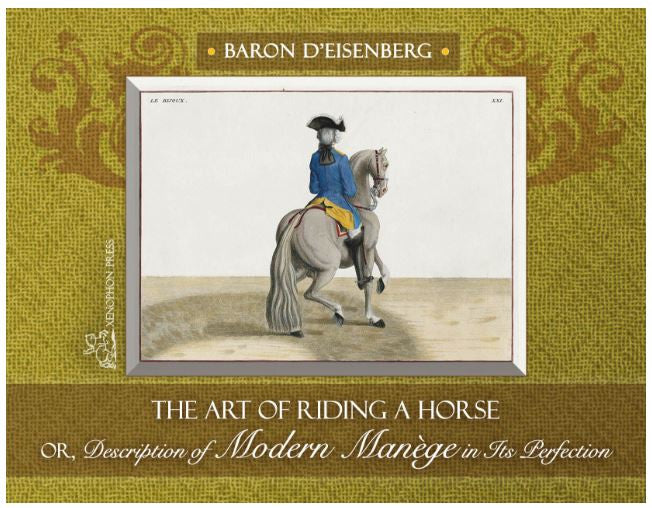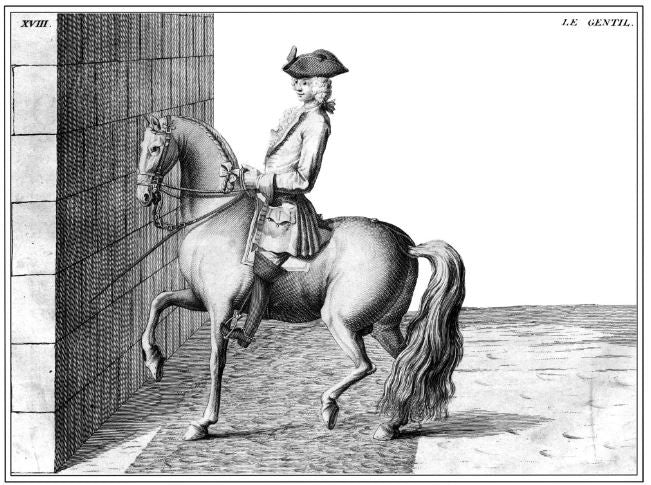Mangaiti Equine Books
The Modern Manège
The Modern Manège
Couldn't load pickup availability
One of the seminal decorative eighteenth-century horse books.
Baron Eisenberg, a German horseman and artist, spent some of his youth at the stables of Saxe-Weimar before entering into the service of the Emperor. He then spent six years in Naples as the Master of Horse of the Viceroy before returning to Vienna where he studied under M. de Regenthal, the Imperial Master of Horse. He participated in the coronation of Emperor Charles V at Frankfurt in 1711, then spent some time in England, but was back in Germany before 1753. He probably died in Tuscany where he was Director and Master of the Horse at the Academy in Pisa.
Friedrich Wilhelm, Baron Rais d'Eisenberg (ca. 1700-ca. 1770) belonged to the aristocracy of the Holy Empire and was one of the most famous horse-lovers of his time. He was raised among horses, and worked first at the court of Saxen-Weimar, then as an equerry in Naples, for the vice king. Later he also worked in Vienna - in the famous Spanish Riding School -, England and Tuscany. The Baron wrote several important and also lavishly illustrated books on horses: his Description of Modern manège in all its perfection, London 1727, and Dictionnaire des termes du manège moderne, 1747, being the best well-known.
Baron D'Eisenberg wrote and illustrated a fascinating book giving a full description of horsemanship which he dedicated to King George II and to his son, His Royal Highness the Prince of Wales. In it he undertakes to illustrate and describe the art of training cavaliers and their horses. The original subscribers to the limited edition book included royalty and nobility from all over Europe.
The engraver of the fine plates in the book was Bernard Picart, born in Paris in 1673, who gained honors at the Academy of Paris at the age of sixteen. He was a master designer and engraver and worked in Paris and Amsterdam until his death in 1733.
condition: hardback, new



